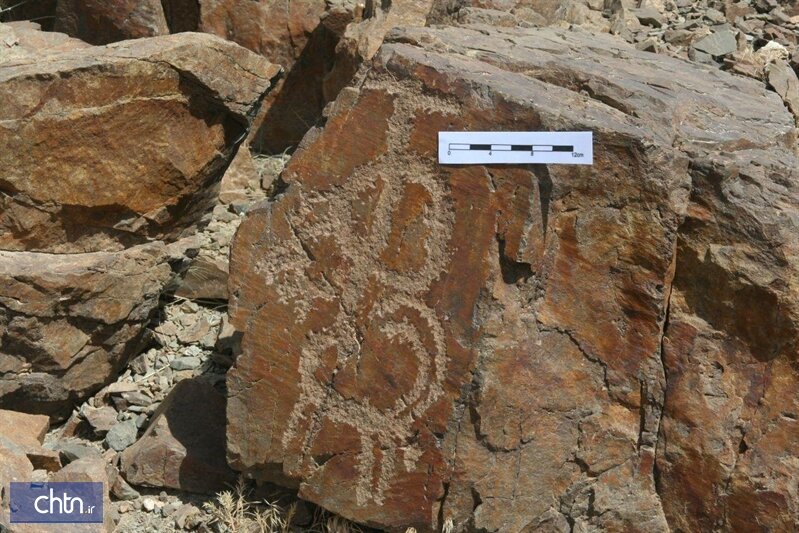TEHRAN – Archaeologists have found prehistoric rock drawings near Natanz in central Iran which give clues about the rise of human presence that is rooted in 14,000 years of history.
Existing findings prove that human life goes back to 6,000 years in the region.
“A 14,000-year-old evidence of human social life has been identified by experts who examining rock carvings being found near Natanz, which is situated in the heart of the Iranian plateau,” CHTN quoted Natanz tourism chief Hossein Yazdanmehr as saying on Saturday.
“Undoubtedly, petroglyphs can be considered as one of the oldest-known surviving works of art from the beginning of human social life.”
“Archaeologists believe that the custom of creating petroglyphs began at the end of the Paleolithic period, so the style of petroglyphs and symbols the bear, as well as the tools used to create them, along with influencing environmental factors, are valuable criteria for determining the historical background of these objects,” the official explained.
He said the petroglyphs were previously discovered near Arisman, a village in Emamzadeh District of Natanz County, Isfahan province.
“With the discovery of the ancient site of Arisman in previous years and the study of excavated works in it, the historical background of the civilized life of the people of this region reached six thousand years ago.”
“Over the past years, various petroglyphs have been discovered in nearby plains of various townships such as Afushteh, Badrud, and Natanz, so research on the structure of these petroglyphs, as well as determining their historical values, began in the past.”
“At the beginning of the current year, archaeologists found that the collection of petroglyphs, which are located open-air sites, dates from the late Paleolithic era onwards,”
“With the completion of these studies, the history of human social life in the northern part of Isfahan province is spanned from six to fourteen thousand years ago,” he noted.
Yazdanmehr expressed hope that this valuable collection of petroglyphs could be protected against atmospheric factors by allocating the necessary funds (from the government).
Enigmatic evidence of human presence on the Iranian plateau as early as Lower Paleolithic times comes from a surface find in the Bakhtaran valley, according to Encyclopedia Britannica.
The first well-documented evidence of human habitation is in deposits from several excavated cave and rock-shelter sites, located mainly in the Zagros Mountains of western Iran and dated to Middle Paleolithic or Mousterian times (c. 100,000 BC).
There is every reason to assume, however, that future excavations will reveal Lower Paleolithic habitation in Iran. The Mousterian flint tool industry found there is generally characterized by an absence of the Levalloisian technique of chipping flint and thus differs from the well-defined Middle Paleolithic industries known elsewhere in the Middle East. The economic and social level associated with this industry is that of fairly small, peripatetic hunting and gathering groups spread out over a thinly settled landscape.
By approximately 6000 BC patterns of village farming were widely spread over much of the Iranian plateau and in lowland Khuzestan. Though distinctly different, all show general cultural connections with the beginnings of settled village life in neighboring areas such as Afghanistan, Baluchistan, Central Asia, and Mesopotamia.


No comments:
Post a Comment